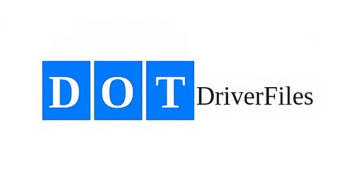Are you doing enough to ensure the safety of your commercial vehicles and drivers? FMCSA safety compliance is crucial for fleet owners and managers to prevent accidents, avoid fines, and maintain overall efficiency. By adhering to DOT compliance regulations and trucking safety requirements, you can ensure the longevity and success of your fleet.
Implementing the necessary commercial vehicle safety measures is vital for reducing the risk of accidents and ensuring regulatory compliance for your commercial drivers. But do you know all the regulations you need to follow?
Key Takeaways:
- FMCSA safety compliance is crucial for the safety and efficiency of your fleet.
- Adhering to DOT compliance regulations and trucking safety requirements helps avoid fines and lawsuits.
- Implementing commercial vehicle safety measures reduces the risk of accidents.
- Understanding FMCSA safety regulations is essential to ensure compliance and maintain motor carrier safety standards.
- By following best practices, such as implementing a driver training program, you can further improve fleet health and safety.
Understanding FMCSA Safety Regulations
The Federal Motor Carrier Safety Administration (FMCSA) is an agency within the Department of Transportation (DOT) that governs the safety regulations for commercial vehicle operators. They issue rules and regulations that fleet managers and drivers must follow to maintain safety on roadways and reduce vehicular accidents. Ensuring compliance with FMCSA safety regulations is important to meet motor carrier safety standards, promote road safety compliance, and ensure regulatory compliance for commercial drivers.
Complying with FMCSA safety regulations is vital for fleet owners and managers to protect their drivers, vehicles, and the public. These regulations are designed to enhance road safety and minimize the risk of accidents. By following FMCSA guidelines, fleet operators can maintain a high level of road safety compliance and avoid penalties from regulatory authorities.
To ensure regulatory compliance for commercial drivers, FMCSA safety regulations address various aspects of trucking operations, including driver qualification and training, vehicle maintenance, load securement, hours of service, drug and alcohol testing, and more. By adhering to these regulations, fleet managers can create a safer working environment for their drivers and reduce the likelihood of accidents caused by non-compliance.
Benefits of FMCSA Safety Regulations
- Enhanced driver and public safety
- Reduced risk of accidents and injuries
- Improved operational efficiency
- Reduced liability and potential legal issues
- Positive reputation and trust from customers
FMCSA Safety Regulations at a Glance
| Regulation | Description |
|---|---|
| Hours of Service (HOS) | Specify the maximum driving and on-duty time for drivers to prevent fatigue-related accidents. |
| Vehicle Maintenance | Require regular inspections and maintenance of commercial vehicles to ensure their safe operation. |
| Driver Qualification | Establish criteria for driver selection, experience, and training to ensure qualified and competent drivers. |
| Drug and Alcohol Testing | Mandate testing for controlled substances and alcohol use to prevent impaired driving. |
| Electronic Logging Device (ELD) | Require the use of ELDs for accurate recording of drivers’ hours of service. |
| Load Securement | Define standards for properly securing cargo to prevent shifting or falling during transportation. |
Key FMCSA Safety Regulations
When it comes to fleet management, it is crucial for owners and managers to stay informed about the key FMCSA safety regulations. By understanding and complying with these regulations, you can ensure the safety and accountability of your commercial vehicles and drivers. Let’s take a closer look at some of the essential regulations you need to be aware of:
Hours of Service (HOS) Rules
The hours of service (HOS) rules set the maximum number of consecutive hours that a commercial vehicle operator can legally drive or work before taking a rest break. These rules are designed to prevent driver fatigue, which is a significant contributing factor to accidents on the road. Compliance with HOS rules is essential for both driver safety and regulatory compliance. Failure to comply with these rules can result in fines, probationary periods, and other penalties.
Electronic Logging Device (ELD) Mandate
Commercial vehicle operators are required to use electronic logging devices (ELDs) to track their hours of service (HOS). ELDs are connected to the vehicle’s engine and automatically record driving time and rest periods. The use of ELDs ensures accurate and reliable tracking, making it easier to demonstrate compliance with HOS regulations. Implementing ELDs not only helps you comply with FMCSA regulations but also improves overall fleet efficiency and safety.
Compliance, Safety, and Accountability (CSA) Program
The FMCSA manages the Compliance, Safety, and Accountability (CSA) program, which evaluates and assesses commercial operators based on their safety incidents and assigns safety rankings. The CSA program tracks various safety performance measures, including driver violations, crashes, inspections, and more. These safety and accountability scores provide a standardized way to assess a fleet’s safety performance and identify areas for improvement.
Drug and Alcohol Testing
FMCSA regulations mandate drug and alcohol testing for commercial drivers in various scenarios, including pre-employment, reasonable suspicion, and post-accident. By conducting regular drug and alcohol testing, fleet owners can ensure that their drivers are fit for duty and reduce the risk of accidents caused by impaired driving. Compliance with these testing requirements is crucial for maintaining a safe and responsible fleet.
By staying up to date with these key FMCSA safety regulations, you can ensure that your fleet operates in compliance with the law, prioritizes driver safety, and maintains high standards of accountability. Implementing the necessary measures and technologies, such as electronic logging devices and drug and alcohol testing programs, will not only help you comply with regulations but also contribute to a safer and more efficient fleet.
Best Practices for Fleet Health and Safety
As a fleet owner, it is crucial to prioritize the health and safety of your fleet to ensure smooth operations and protect your drivers. Apart from complying with FMCSA safety regulations, implementing best practices can significantly contribute to a safer and more efficient fleet. Here are some key practices to consider:
1. Develop a Comprehensive Fleet Safety Policy: Creating a fleet safety policy establishes clear expectations and guidelines for drivers regarding safety protocols. This policy should encompass various aspects, such as driver behavior, vehicle maintenance, and accident reporting procedures. By communicating these expectations effectively, you can promote a safety-conscious culture within your fleet.
2. Establish a Driver Training Program: A well-designed driver training program is essential for equipping your drivers with the necessary skills and knowledge to prevent accidents and drive safely. This program should cover areas such as defensive driving techniques, hazard awareness, and proper vehicle handling. By investing in driver education and training, you can reduce the risk of accidents and improve overall fleet safety.
3. Set Up an Accident Review Group: Accidents can serve as valuable learning opportunities for your fleet. By establishing an accident review group, you can conduct thorough investigations to determine the root causes of accidents, identify any potential liability issues, and take necessary corrective actions. This group can also provide post-accident training to drivers to prevent similar incidents in the future.
4. Utilize Technology for Monitoring Driver Performance: Leveraging technology such as GPS fleet management software allows you to monitor driver performance and identify any unsafe behaviors or patterns. This software can provide insights into driver speeding, harsh braking, and excessive idling, enabling you to address these issues proactively and improve overall fleet safety. Embracing technology can play a significant role in enhancing driver accountability and performance management.
By implementing these best practices, you can create a safer and more efficient fleet, mitigate potential risks, and protect both your drivers and your business. Remember, safety should always be a top priority for any fleet owner.





